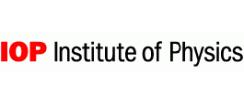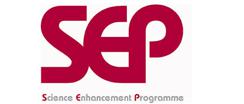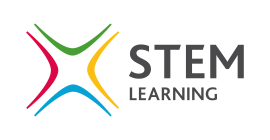Physics in the context of health care
Even if you are not teaching a medical physics unit as part of your GCSE course, it is worth considering changing the way you teach the electromagnetic spectrum and approaching it from a medical physics perspective, introducing careers in health care as you go. The first resource on the list provides a good overview of how each part of the spectrum can be used in a medical context. This also provides a useful context when looking at radioactivity.
Whilst this list provides a source of information and ideas for experimental work, it is important to note that recommendations can date very quickly. Do NOT follow suggestions which conflict with current advice from CLEAPSS, SSERC or recent safety guides. eLibrary users are responsible for ensuring that any activity, including practical work, which they carry out is consistent with current regulations related to Health and Safety and that they carry an appropriate risk assessment. Further information is provided in our Health and Safety guidance.
Medical Physics in the Electromagnetic Spectrum
A great journey through the electromagnetic spectrum showing the use of electromagnetic waves in healthcare. The accompanying teacher notes are essential to get the most out of the presentation and it’s recommended that these are read through carefully several times before showing the presentation to students so that you can give a good commentary.
There are some useful student worksheets included based on the information in the slides.
Physical Health: Videos
Radiograhers and other healthcare professionals explain the imaging techniques they use.
So that you can use the most relevant part of the film for the lesson content, the video is presented as a whole and also in four sections:
X-rays: how x-ray and digital images are produced by modern machines
CT scanning: using x-rays to study cross sections of body tissues
Pulse oximetry: how to measure oxygen content of blood without taking a blood sample
Ultrasound: using echoes to invesitgate what is happening inside the body
Pulse Oximeters
Here’s a really nice application of LEDs that students, and teachers, may not be aware of. Use the presentation, along with the teacher notes to explain how pulse meter works and use the short film, just less than 4 min long, to add depth and interest. There’s also a student worksheet which teachers might like to use or adapt.
Ultrasound *suitable for home teaching*
These resources explain how ultrasound works and show how physiotherapists can use it to assess sports injuries. Ultrasound plays a vital role in helping diagnose and even treat medical complications and diseases. What’s more, there is a huge demand for ultrasound professionals.
You could start with the animated presentation using the teacher notes which explain how a foetus can be visualised using ultrasound.
The final slide links to a fun and fast moving film (included as a separate file) which recaps some key ideas about sound and then shows how ultrasound is used at a football club. It’s a well designed and put together set of resources though you may want to revamp the not very exciting student worksheet.
GCSE Teacher Activities
The “what’s in the box” activity described on page 16 of this resource forms a lovely introduction to ultra sound imaging, a topic in which is can be difficult to include much practical work, and follows on very nicely from the film in the resource above.
Normal 0 false false false EN-GB X-NONE X-NONE When ultrasound waves meet a boundary between different materials, some of them are reflected. Ultrasound machines measure the time between the wave being sent and returning, and use that to find the depth it was reflected from. A computer can then put together these measurements to create a picture of what is inside.
In this practical, an object is placed in a sealed box with small holes in the lid. The students should gently place a skewer in each of the holes and measure how deep it will go. This can be used to model ultrasound scanning, as students try to work out what is in the box from their measurements.
Ideally there would be several boxes prepared so that students could work in small groups and all experience the activity for themselves. It’s helpful to have a pattern of dots pre-marked on the box indicating where the skewers should be placed and this can lead on to a discussion about resolution.
Medical Uses of Ultrasound
This is another useful presentation explaining the uses of ultrasound in medicine.
The presentation describes:
• what is ultrasound
• how ultrasound imaging works
• use of ultrasound in monitoring pregnancy
• Doppler shift and measuring blood flow with ultrasound
• ultrasound safety
Medical Physics and Radioactivity
You’ll find here a very good presentation that briefly outlines GCSE level radioactivity before explaining its use in medical diagnosis and treatment. Coupled with the also very good teacher notes, which go well beyond the presentation, this is a comprehensive set of materials which teachers will find very useful, particularly if this isn’t an area of physics they are familiar with.
Physical Health: Practicals
There are plenty of films on this topic but here’s some hands on practical work for students to do. Both the radiography and the colour analysis (pulse oxymeter) are recommended.
The radiography activity puts the students in the role of a radiographer examining different body tissues. Instead of using the luminescent film to capture the image, students could take photographs with their mobile phones.
The colour analysis practical involved converting a measuring cylinder into a simple colorimeter in order to illustrate how a pulse oximeter works. This needs a technician to prepare it before the lesson. Alternatively, it’s quite likely that your school may already have colorimeters which could be used.
NHS Careers - Radiographer
A description of the types of career available to radiographers in the NHS, with entry requirements and information about support roles within the radiography team.
You could set a homework task to research and design a leaflet explaining the types of careers in radiography, and the science behind the variety of techniques and equipment they may use.
Radiography - Careers
A Catalyst article about careers using radiography in medical procedures. The article looks at a typical working day for a radiographer, the types of radiography used, how to become a radiographer and the qualifications available.
Gamma Cameras
The film clip is really interesting and any students vaguely interested in physics will love it. Follow up the film with the teacher led presentation (notes for this are also provided) and the student worksheet which is aimed squarely at the top end of the GCSE specification
MRI Scanning (Siemens)
The news article about functional MRI in this resource makes a useful literacy activity, either for homework or for short class activity.
Ask students to use different coloured highlighters (or underline in different colours) to identify examples of FACT, THEORY or OPINION.
Normal 0 false false false EN-GB X-NONE X-NONE /* Style Definitions */ table.MsoNormalTable {mso-style-name:"Table Normal"; mso-tstyle-rowband-size:0; mso-tstyle-colband-size:0; mso-style-noshow:yes; mso-style-priority:99; mso-style-parent:""; mso-padding-alt:0cm 5.4pt 0cm 5.4pt; mso-para-margin-top:0cm; mso-para-margin-right:0cm; mso-para-margin-bottom:10.0pt; mso-para-margin-left:0cm; line-height:115%; mso-pagination:widow-orphan; font-size:11.0pt; font-family:"Calibri","sans-serif"; mso-ascii-font-family:Calibri; mso-ascii-theme-font:minor-latin; mso-hansi-font-family:Calibri; mso-hansi-theme-font:minor-latin; mso-fareast-language:EN-US;}
Making a Difference - Physics Careers in Medicine
Whatever area of healthcare students may be interested in pursuing, they will find themselves working with an inter-disciplinary team, from engineers to surgeons, from nurses to pharmacists. This is a good video to illustrate just a few of the careers in the healthcare sector related to medical physics.





